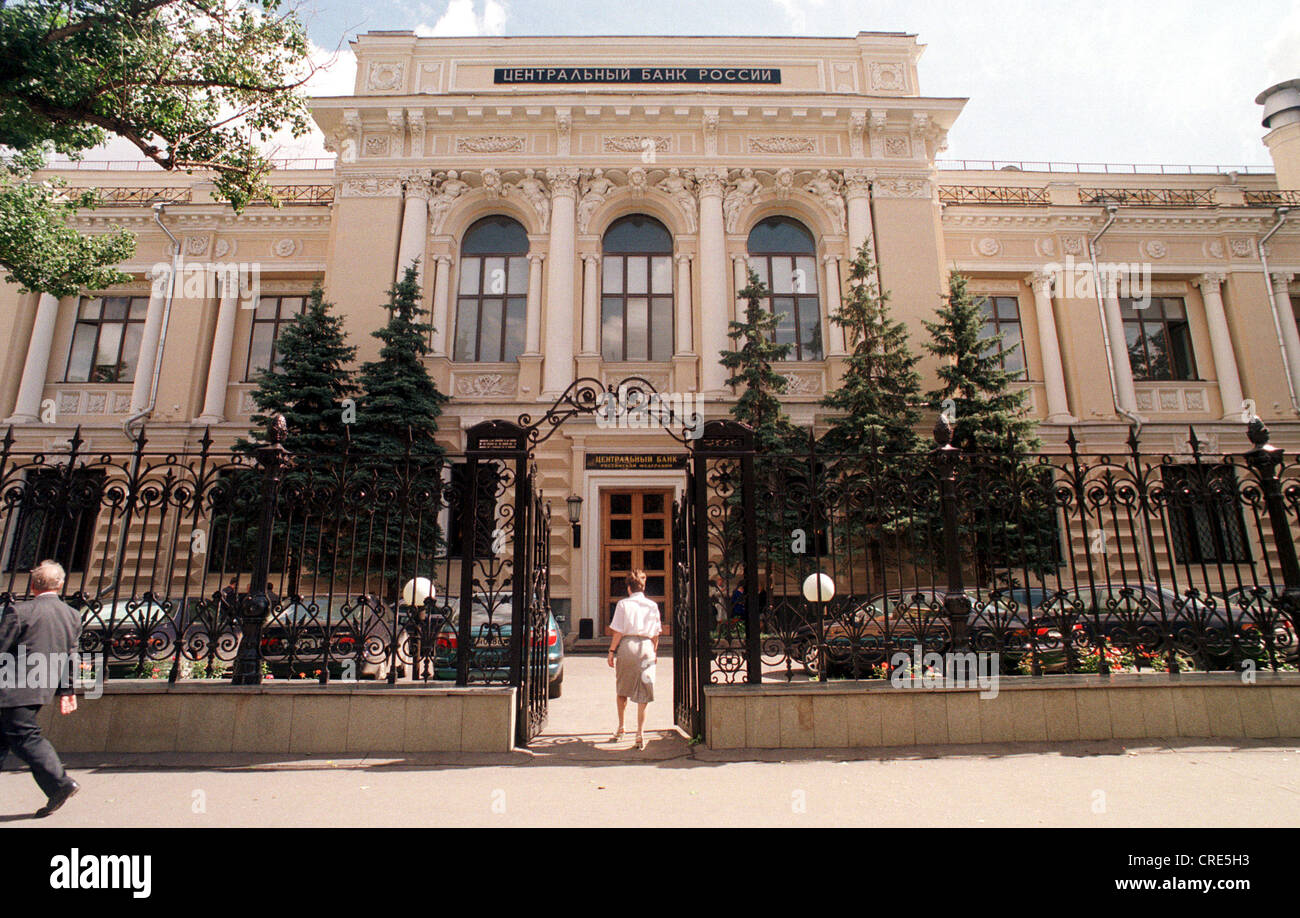Products
By Team
Sales
Multithread effectively and personalize outreach to convert deals faster
Social Media Marketing
Elevate social presence and drive business growth from social media
RevOps
Identify and prioritize high-intent leads, and improve sales effectiveness
Events & Field Marketing
Find and connect with ICP attendees, and improve event outcomes
Resources
Bank of Moscow
What Does Bank of Moscow Do?
The Bank of Moscow (Банк Москвы) was one of Russia's largest universal commercial banks, offering a comprehensive suite of financial services to individuals, corporate clients, and municipal entities. Established in 1995, it held a significant market share, particularly in Moscow and its surrounding regions, and expanded its network across Russia. In 2011, VTB Bank acquired a controlling stake in the Bank of Moscow. Subsequently, a full merger and operational integration into the VTB Group occurred, largely finalized between 2016 and 2018. This profile reflects the Bank of Moscow's status and operations as a distinct entity before its absorption by VTB Bank.
Where Is Bank of Moscow's Headquarters?




HQ Function
This central office directed all major operations of the Bank of Moscow, including strategic planning, corporate finance, treasury operations, risk management, and oversight of its extensive branch network.
Notable Features:
Located in a historically significant financial district of Moscow, the headquarters building itself was a substantial structure, symbolizing the bank's scale and importance. While specific unique architectural awards are not widely publicized, its prime location and size underscored its role in Russia's financial landscape.
Work Culture:
As a leading Russian financial institution, the work culture at Bank of Moscow's headquarters would have been characterized by professionalism, a focus on financial expertise, regulatory compliance, and customer-centric service. It was likely a dynamic and competitive environment typical of large banks.
HQ Significance:
The headquarters was the command center for one of Russia's top banks, vital for managing its vast operations, serving the capital city's financial needs, and driving its national expansion strategy. Decisions made here significantly impacted the Russian banking sector.
Values Reflected in HQ: The headquarters aimed to project stability, reliability, and financial strength – core values for a major bank entrusted with public and private funds. Its central and imposing presence contributed to this image.
Location:
While primarily focused on the Russian domestic market, the Bank of Moscow historically maintained a limited international presence. This included subsidiary banks in CIS countries such as BM Bank (Ukraine), Bank Moscow-Minsk (Belarus), and Banka Moskve AD Beograd (Serbia). It also had representative offices in key financial centers, for instance, Frankfurt, Germany. These international outposts were established to facilitate trade finance, manage correspondent banking relationships, and serve Russian clients with international business interests. Following the acquisition by VTB, these international assets were largely integrated into VTB Group's existing global network or divested.
Street Address:
ul. Rozhdestvenka, 8/1, str. 1
City:
Moscow
State/Province:
N/A (Moscow is a federal city)
Country:
Russia
Where Else Does Bank of Moscow Operate Around the World?
Various major cities, Russia
Address: The Bank of Moscow operated an extensive network of several hundred branches and offices across numerous regions of Russia. Key cities included St. Petersburg, Novosibirsk, Yekaterinburg, Nizhny Novgorod, and many others.
To expand the bank's footprint nationwide, serve diverse customer segments across Russia, gather deposits, disburse loans, and contribute to the economic activities of the respective regions, thereby strengthening its overall market position.
Buying Intent Signals for Bank of Moscow
Highperformr Signals uncover buying intent and give you clear insights to target the right accounts at the right time — helping your sales, marketing, and GTM teams close more deals, faster.
Who's Leading Bank of Moscow? Meet the Executive Team
As of April 2025, Bank of Moscow' leadership includes:
Who's Investing in Bank of Moscow?
Bank of Moscow has been backed by several prominent investors over the years, including:
What Leadership Changes Has Bank of Moscow Seen Recently?
As the Bank of Moscow was fully integrated into VTB Bank, with the process largely completed by 2016-2018, there have been no executive hires or exits attributable to 'Bank of Moscow' as an independent entity in the last 12 months. Significant leadership transitions occurred earlier, most notably in 2011 with VTB Bank's acquisition of a controlling stake, which led to the appointment of a new management team headed by Mikhail Kuzovlev. Subsequent changes were part of the integration process into VTB Group.
What Technology (Tech Stack) Is Used byBank of Moscow?
Discover the tools Bank of Moscow uses. Highperformr reveals the technologies powering your target accounts — helping your sales, marketing, and GTM teams prioritize smarter and close faster.

Bank of Moscow Email Formats and Examples
Prior to its full merger with VTB Bank, the Bank of Moscow utilized corporate email addresses typically associated with its domain bm.ru. Common formats in Russian corporations often include combinations of first name, last name, and initials.
Likely formats included [first_initial][last_name]@bm.ru or [first_name].[last_name]@bm.ru (historical)
Format
e.g., asidorov@bm.ru or anna.petrova@bm.ru (historical examples)
Example
0 (These email formats are no longer active or valid as the Bank of Moscow has been fully integrated into VTB Bank, and the bm.ru domain is not actively used for standalone Bank of Moscow email communications.)%
Success rate
What's the Latest News About Bank of Moscow?
Reuters / VTB Press Service • May 10, 2016
VTB Bank Completes Legal Merger of Bank of Moscow
VTB Bank announced the completion of the legal reorganization process, fully absorbing the Bank of Moscow. This integration meant Bank of Moscow ceased to exist as a separate legal entity, with its assets, liabilities, and client base transferred to VTB Bank, streamlining VTB Group's structure....more
Financial Times / Reuters • February 22, 2011
VTB Group Acquires Controlling Stake in Bank of Moscow
Russia's VTB Group won an auction to buy a 46.48% stake in the Bank of Moscow from the Moscow city government for 103 billion rubles. This strategic acquisition marked the beginning of the Bank of Moscow's integration into the state-controlled VTB banking conglomerate....more
Reuters • July 29, 2014
Bank of Moscow Among Russian Banks Hit by EU Sanctions
The Bank of Moscow, along with other major Russian state-owned banks, was targeted by European Union sanctions over Russia's role in the Ukraine crisis. The sanctions restricted access to EU capital markets....more
Bank of Moscow Historical Records / Business Chronicles • March 1995
Bank of Moscow Founded
The Bank of Moscow was established in March 1995. It was initially created to handle the accounts of the Moscow city government and its enterprises, quickly growing to become one of Russia's largest retail and corporate banks....more
Highperformr's free tools for company research
Explore Employees by Region or Country
See where a company’s workforce is located, by country or region.
View Funding Details
View past and recent funding rounds with amounts and investors.
Understand Revenue Insights
Understand company revenue estimates and financial scale.
Track Active Job Openings
Track active roles and hiring trends to spot growth signals.
Review Product and Offerings
Discover what a company offers—products, platforms, and solutions.
Get SIC or NAICS Codes
Get the company’s official SIC and NAICS classifications.
Analyze Website Traffic Trends
Analyze visitor volume, engagement, and top traffic sources.
Discover Social Profiles and Engagement
Explore LinkedIn, Twitter, and other active social profiles.
Identify Top Competitors
Identify top competitors based on similar business traits.
Research and Discover Companies with Highperformr — Smarter, Faster
Explore companies in depth — from the tech they use to recent funding, hiring trends, and buyer signals — all in one powerful view.
Highperformr AI helps you surface the right accounts and enrich your CRM with verified company and contact insights, so your teams can prioritize and engage faster.
- Track intent signals to find buyers who are actively in-market
- Enrich contacts and companies instantly, no need to switch tools
- Automate workflows to stay ahead of every change
- Connect your CRM & tools for seamless data sync and activation
Thousands of companies, including Bank of Moscow, are just a search away.



.png)
.png)



